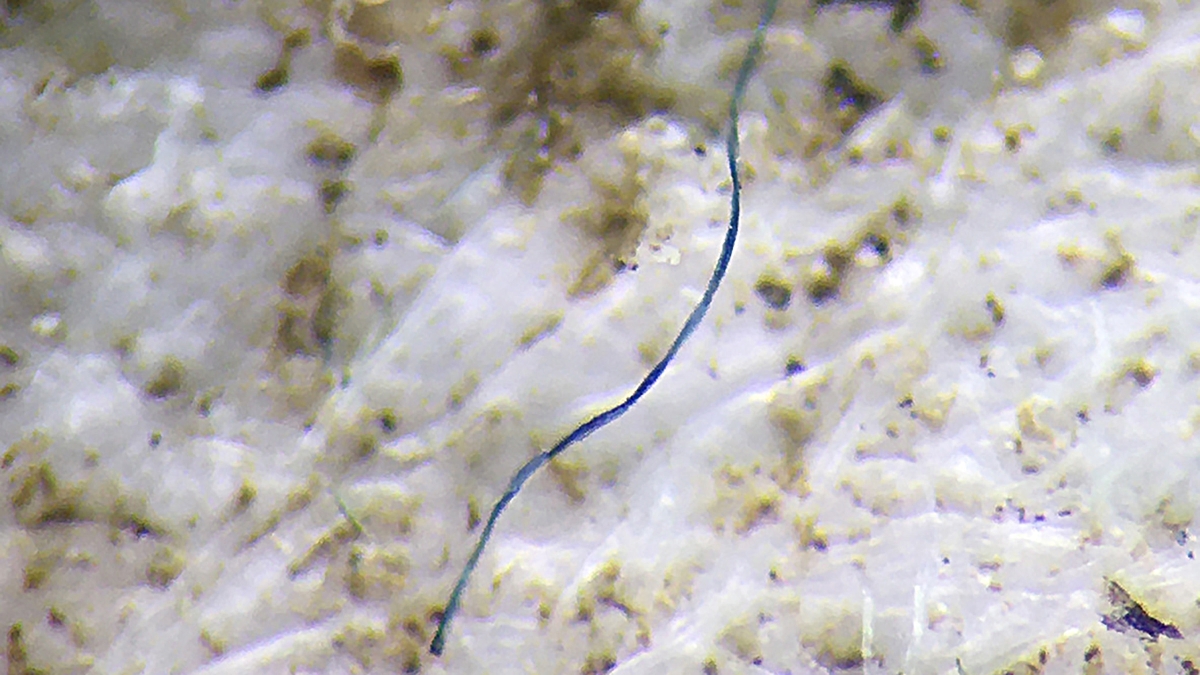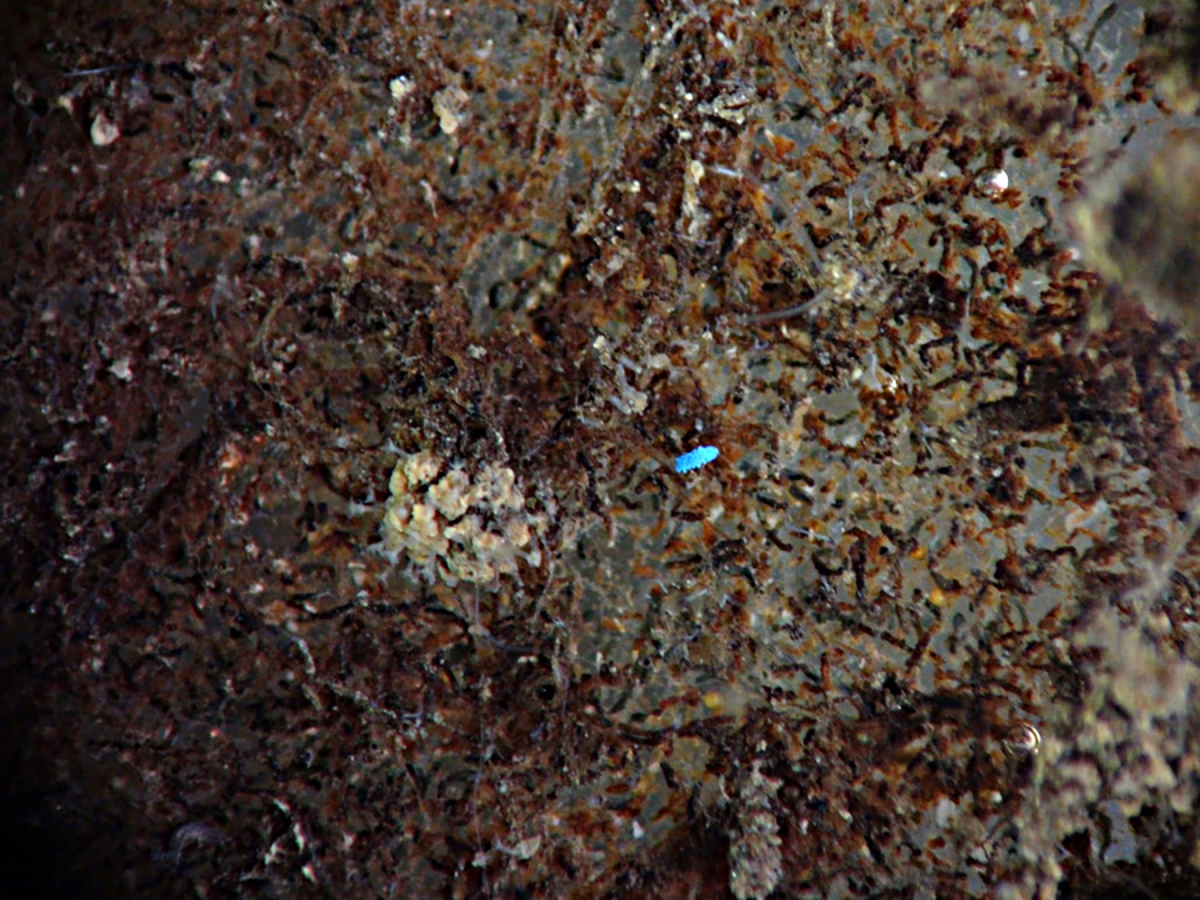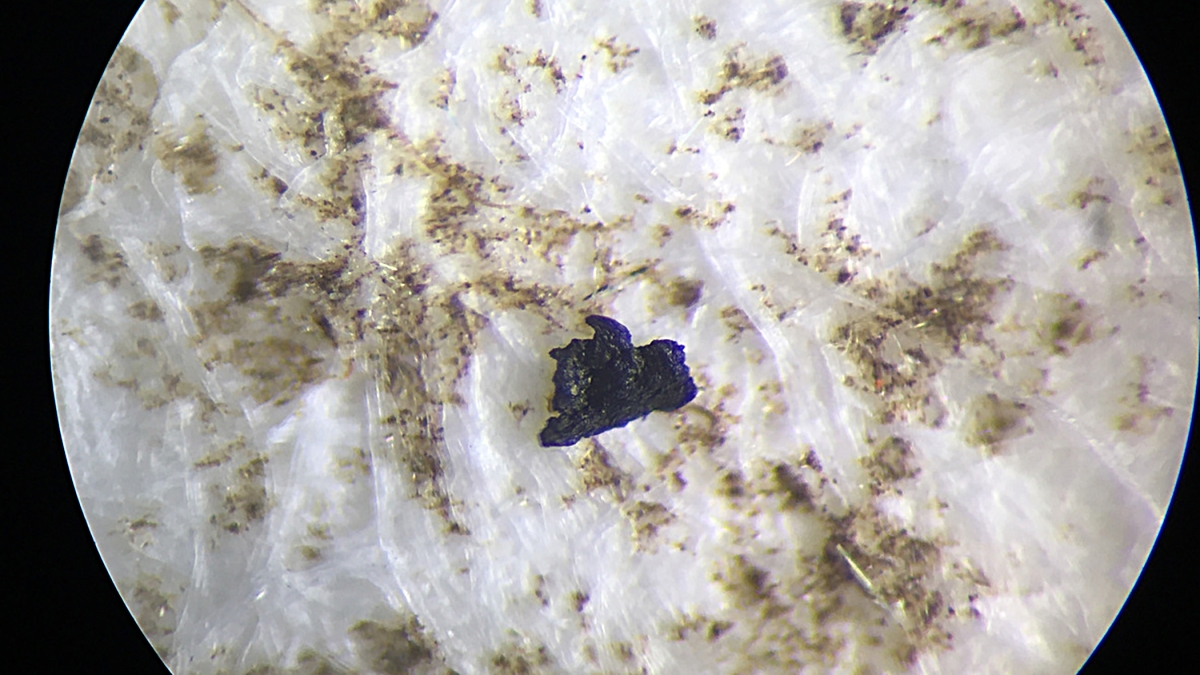Biofilms and Microplastics
Biofilms and Biodiversity lessons include the observation and isolation of microplastics from biofilm samples.
Chesapeake Bay: A Microcosm of Microplastic
Section I: Microplastics Content Primer
History of Plastic
Plastics are man-made substances and are known as polymeric materials. This means that they are composed of a chain of repeated identical molecules, or polymers, usually made up of carbon, hydrogen, sulfur, and nitrogen. These materials are highly flexible and extremely durable, making them an excellent choice in manufacturing. The first synthetic plastic appeared in New York in 1907 under the name Bakelite, which, over the next few decades, led to the production of a growing number of plastic polymers.12 Currently, hundreds of millions of tons of plastics are produced each year globally, and their uses range from packaging and insulation to manufacturing of equipment, furniture and vehicles. The initial production purpose of plastic was to make goods that were easy to manipulate, cheap to manufacture, and would last a long time. Today, most plastic goods are made to be thrown away after a single use. Well-known examples of this are plastic cutlery, take-out food containers, grocery bags, drink bottles, and straws, among many others.
The most common polymers produced are polypropylene, polyethylene, polyvinyl chloride, polystyrene and polyester, all of which are primarily petroleum-based substances.
Common plastic products and names of the polymers
| Examples of Common Products | Polymer Type |
| Carbonated beverage bottles, salad dressing bottles, toys, furniture, clothing (like fleece and nylon) | Polyethylene terephthalate, or PE |
| Grocery bags, milk and juice bottles, cleaning product bottles, dish soap bottles, cable and wire coating | High density polyethylene, or HDPE |
| Plastic wrap, shower curtains, peanut butter jars, water pipes, construction fencing | Polyvinyl chloride, or PVC |
| Produce bags, garbage bags, honey bottles, internal bottle coatings, construction insulation | Low density polyethylene, or LDPE |
| Yogurt containers, takeout containers, single-use utensils, straws, car components | Polypropylene, or PP |
| Bags, DVD and Blu-ray discs, plexiglass, vehicle components | Others, such as polycarbonate |
The Source of the Problem
Did you know? 60 to 80% of the world's litter is plastic waste.
Millions of tons of plastics enter the marine ecosystem every year, and it is estimated that 80% of this comes from littering.19 The other 20% mainly comes from commercial fishing gear and waste from wastewater treatment plants (WWTP). It's very important to note that the majority of these plastic pollutants come from land-based activities and are transported into the water by stormwater runoff, wind, and illegal dumping.
While plastics in the marine ecosystem range in size, one particularly troubling category of marine plastic waste is microplastics. Microplastics are polymer fragments that are smaller than 5 millimeters, and they can be classified as primary or secondary. Primary microplastics are released into the environment directly from industrial processes, cosmetics, toothpaste, and textiles. One type of primary microplastic are small plastic spheres known as microbeads that are used as abrasive particles in cosmetics and cleaning products like face scrubs, toothpaste, and detergent. Secondary microplastics are those that break down from larger pieces of plastic debris; this fragmentation is usually caused by physical stress such as wave action or exposure to light.11 Microbeads and microfibers from synthetic clothing are the most common types of waste that enter the waterways through household drains.

As is to be expected, studies have shown that sampled coastal waterways and ecosystems close to urban areas contain much higher densities of microplastics than open ocean environments.
Trash Free Maryland is a non-profit organization that focuses on remedying pollution in the state; in recent years, they have looked for microplastics in the state's bodies of water and have found them in the Chester River, the Patuxent River, the Patapsco River, the West and Rhode Rivers, the Severn River, the South River, and the Magothy River.
Fragments and Flow
After the plastic fragments come into the Bay, they flow and move depending on the water dynamics and currents of the estuary. Aquatic systems are a complex network of interconnected ecosystems that flow in multiple directions, allowing for the cross-transfer of water, plastics, and organisms. Plastics can persist in bodies of water for many years and travel spatially across aquatic and marine ecosystems. Less dense plastics like polypropylene (PP), which makes up 80-90% of floating marine debris, have the potential to be transported large distances in these ecosystems, since they are suspended in the water column and are moved by currents and winds. They can also be carried by organisms including algae and fish. Denser plastics like polyethylene terephthalate (PET) will sink and settle into the sediment, accumulating in large quantities over time. This, coupled with the fact that polymers are usually adsorbent, means that they are the perfect means of transport for harmful substances like pesticides and other pollutants that sorb onto, accumulate on, and can later sink with these particles. These substances are known as persistent organic pollutants, or POPs, and their concentration in the waterways may be significantly increased by the presence of microplastics.
Life and Consequences
Aquatic and marine food chains are affected by microplastics at every level. At the base of the trophic pyramid, microorganisms settle on plastic particles, creating a complex biofilm, which makes them less buoyant and more easily grazed by zooplankton, crustaceans, and bivalves. Fish and other organisms consume the organisms that are on the plastics, allowing microplastics to move into higher trophic levels.
However, microplastics consumption and ingestion is not a concern that is limited to marine and aquatic environments. One recent study found microplastics in humans' gastrointestinal systems, exhibiting our exposure to and likely ingestion of these particles. Other studies done within the past few years have shown evidence of microplastics in drinking water. A 2018 study found microplastics in 90% of tested table salts, and other recent publications exhibit the presence of microplastics in seafood meant for human consumption. It is probable that humans are consuming microplastics every day, even if the resulting health effects have not yet been clearly assessed. In 2020, scientists reported that a number of different kinds of plastic can be detected in human tissues including from the lung, liver, spleen, and kidney.
Action and Advocacy
A troubling aspect of microplastics is that their minute size makes it extremely difficult to remove them from the environment once they have been introduced. The improper disposal of a plastic grocery bag on land can lead to the addition of plastic particles - that persist for hundreds of years - into an aquatic or marine ecosystem.
Currently, legislation exists in over 80 countries to address the issue of plastic pollution, through actions such as plastic bag bans, cosmetic microbead bans, and taxes/levies on plastic bag use.
The best approach to reducing microplastics in our waters is to focus on preventing them from initially entering the environment, so proactive policy can be very effective if enforced properly. However, efforts to reduce existing marine-based plastic waste are also crucial in the fight against plastic pollution. There are a number of groups and organizations working to clean up our oceans on a global level, many focusing on community-based trash removal.

In 2015, the United States passed the Microbead-Free Waters Act, creating a nationwide ban on the use of microbeads in rinse-off cosmetic products. This legislation was passed with overwhelming support, and its implementation has resulted in the use of environmentally friendly alternatives such as strawberry seeds or rice.
Additionally, recent local and regional-level efforts have focused on reducing other single-use plastic consumption. Localized bans on plastic bags and utensils, as well as the phasing out of plastic straws by large companies such as United Airlines, have helped increase awareness for and the trendiness of decreasing our everyday reliance on plastics.
The creation of compostable plastics, made from materials like corn starch and cellulose, could also help reduce the amount of plastic waste in our environment. While synthetic plastics require oil and gas as raw materials, the bioplastics industry uses renewable materials that can be made into plastics, supporting an economically and environmentally sustainable solution.
Section II: Biofilms, Microplastics, and Project-Based Learning
A Focus on Baltimore
Local efforts in Baltimore City include the implementation of trash collectors in the waters of the Inner Harbor and a series of other activities in the hope of making the Harbor swimmable and trash free by 2020. The charismatic trash collectors known as Mr. Trash Wheel, Professor Trash Wheel, and Captain Trash Wheel draw in visitors from all over the world and spark a conversation about trash management and pollution prevention among people in the community of all ages.
At the Institute of Marine and Environmental Technology (located in Baltimore's Inner Harbor) and Georgetown University scientists (see references below) have been looking for microplastic particles in the water by deploying aluminum discs. These discs become colonized with organisms forming what is known as a biofilm. In these biofilms, scientists have successfully found particles that resemble man-made polymers and seem to be present in high densities in the water. The isolation techniques being used are physical in nature and rely on the separation of the microplastics from the biofilm community in high density seawater (> 60 PPT). The seawater samples are filtered with a vacuum pump, and materials are collected on filter paper. Filter paper samples are stored in glass Petri dishes and allowed to dry overnight. Samples are examined microscopically to look for the presence of microplastics and other related materials. These methods have been successfully tested and performed by teachers and students in all seven high schools in Maryland's Carroll County Public School district.
Project-based Science
One of the objectives of this pilot project is to have high school teachers and students test the lab protocol to see if they are able to process biofilm samples from Baltimore and successfully find microplastics. The first round of testing was completed in 2018, and teachers and students were able to isolate microplastics samples, even in cases where there was a significant amount of shell material from colonized mussels and barnacles.

Since 2019, testing has continued to refine ideas related to methods and classroom pedagogy and protocol efficacy. Also, the further development of awareness among K-12 audiences regarding microplastics has grown in interest and includes students in Maryland, South Carolina, and Barcelona, Spain.
These projects and all research efforts around microplastics have a common goal: to mitigate plastic pollution.
Important steps include:
- Educating the public on ways to prevent plastic from entering aquatic and marine ecosystems
- Collecting particles as best as possible
- Degrading polymers, potentially using microorganisms
Authors: J. Adam Frederick, Maryland Sea Grant; Eva May, Maryland Sea Grant; Jesse Meiller, American University; Ana Sosa, Maryland Sea Grant / Institute of Marine and Environmental Technology
Part of this work was supported by the National Science Foundation's Dynamics of Coupled Natural and Human Systems program.
Additional Resources
Isolating Microplastics from Biofilm Communities: Connecting Project-Based Learning & Research. Jesse Meiller, Ana Sosa, Eva May, J. Adam Frederick. The American Biology Teacher (2022) 84 (9): 555–561. https://doi.org/10.1525/abt.2022.84.9.555
Freshwater algal biofilm assemblages are more effective than invertebrate assemblages at aggregating microplastics. Joseph Barnes, Barbara Balestra, Karen L. Knee, J. Adam Frederick, Natalie Landaverde, and Jesse Meiller. Heliyon, Volume 10, Issue 1, 15 January 2024, e23239. https://www.sciencedirect.com/science/article/pii/S2405844023104476?via%3Dihub
